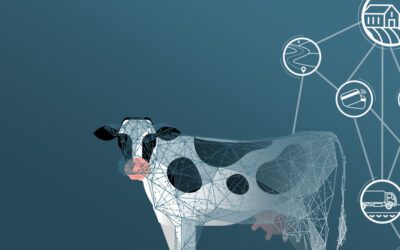Tools to monitor milk movement, gather data, and report costs are key to a successful milk logistics operation.
In many ways, what was once a rote operational task has evolved into a strategic, functional imperative with millions of dollars at risk every day. It’s simply not good enough to build a schedule for milk movement and “hope” that all goes well. Sitting back and waiting for receiving plant or hauler to call about a problem requires countless emails and phone calls to resolve.
Today’s environment demand’s more:
Knowing where trucks are in real-time
Sharing schedules, changes, and exceptions with customers and haulers at a moment's notice
Anticipating problems before they occur
Score carding daily performance
Adjusting routes and schedules to maximize milk returns and minimize miles, all while capturing the best pooling outcome
Knowing key cost drivers
But new technologies are helping planners to take back control of the milk planning process and deliver a better, all-around experience.
1. Monitor and Adjust - Before the Phone Rings
What if you could get visibility into these events and start adjusting as they occur?
The first step is simply seeing where loads are on a map compared to the schedule. Then, simple sorting features to monitor wait times and delays take you a step further. Advanced technology helps dispatchers monitor loads from the moment milk is loaded onto the truck until it reaches the plant. You will no longer be dependent on feedback from the hauler or the plant calling when there is a problem and often too late to fix it.
2. Ditch the Paper and Gather Load Data in Real-Time
It is a simple reality that the industry has come to accept now for decades – paper is slow, susceptible to errors, and easy to lose.
What if dispatchers, haulers and customers could obtain accurate and timely data on every load of milk without relying on paper manifests? A simple, easy-to-use app tracks the load from start to finish, collecting all the relevant load attributes.
Then, all data is stored, shared with the producer and customer, and pushed to your payroll system once the load is received.
Listen to Ben Schaendorf, a milk hauler using an app to track loads
3. Know the Costs and Logistics of Moving Milk
In most cases, the day-to-day decision-making and cost control are somewhat separate. Dispatchers make the decisions. The payroll team pays the haulers. Maybe if the month-to-month change is significant enough, management will ask, “what’s going on?”
Once again, integrated systems are the only way to address these problems. Knowing and reporting on the key cost drivers and viewing the miles, load weights, and wait times regularly is feasible. They then use that data to inform the following days or week’s schedule to take costs out of the system.
Using Milk+ by Ever.Ag to Get You Started
Many dairy businesses operate on a day-by-day mindset and work just to get milk to the plant. But if you are at this point, you have not even begun to scratch the surface of the opportunity that awaits in optimizing milk planning. Your goal can be much more than successfully delivering milk – efficiency and profitability can be achieved in everyday milk planning operations.
The Milk+ by Ever.Ag platform, including Dispatch, Mobile Manifest, Receiving, and Payroll, offers complete data collection and real-time feedback to improve milk operations.
Case Study
Find out how Mullins Cheese improved their payroll processing with Ever.Ag.
Contact Us
Start optimizing your milk planning operations, today.


